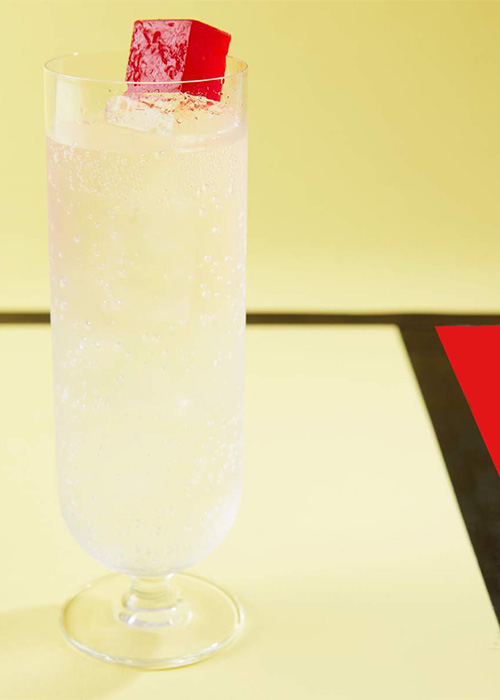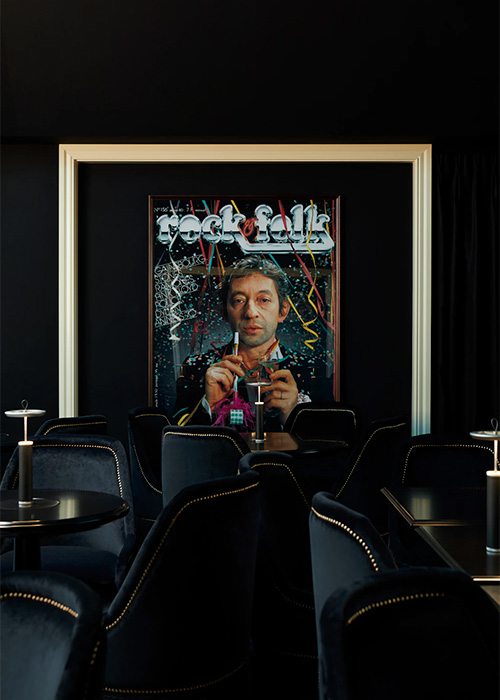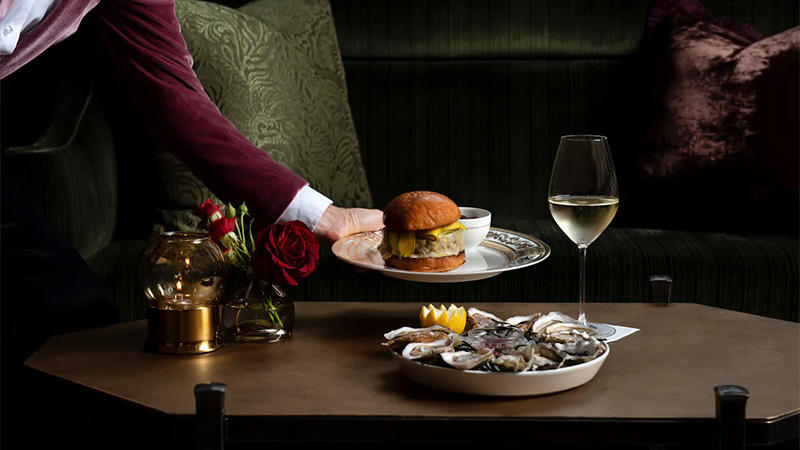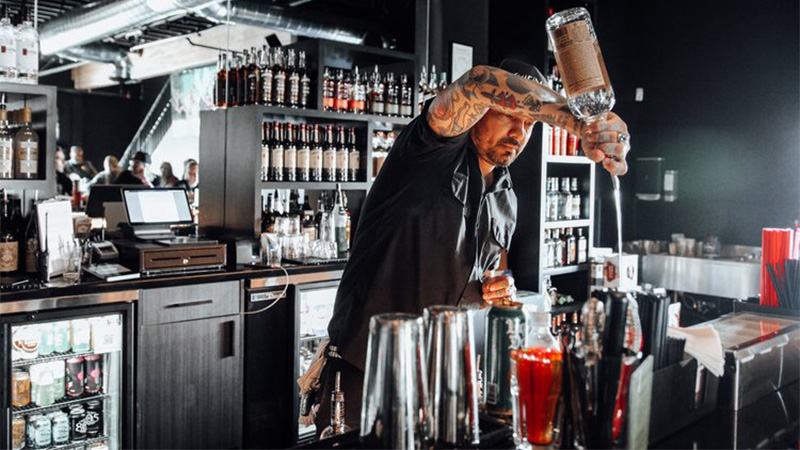“Art is everywhere” isn’t just a creative’s colloquialism, especially when it comes to what we drink. You’ll find art in a morning cup of coffee — even when it’s not topped with stenciled foam — a genius libation topped with a dainty garnish, or even an ice-cold beer with a flawlessly foamy head. While this may be an easy sentiment to overlook in daily life, a growing crop of museum bars are a fresh reminder that there’s art present in all we do.
Historically, one wouldn’t go out of their way for the watered-down coffee or subpar wine served in plastic cups by fast-casual museum vendors. But these elegant bar spaces and elevated beverage programs popping up inside the world’s most dynamic art hubs are becoming worthy of their own independent visits — with cocktails to match the masterful exhibits in the neighboring rooms.
A Visual Feast
In summer 2023, London’s Tate Modern revealed Corner, a swanky modern bar that allows museum-goers to stay awhile past closing (the exhibition floor closes at 6 p.m.; Corner closes at 11 p.m.) and to sit riverside on the summer patio that sprawls out to the Thames. The bar regularly puts up themed drinks as extensions of the art and artists in the museum’s current collection. That same fall, piano bar Le Gainsbarre opened inside Paris’s transformed Maison Gainsbourg, the historic house and cultural institution dedicated to multi-hyphenated French artist Serge Gainsbourg.

“Sometimes museums provide rooms ideal for seeing art, but not necessarily speaking about it,” says Estelle Bossy, beverage director of NYC’s Le Rock and the new Frenchette Bakery at the Whitney, which includes the bakery itself, a cafe, and the eighth-floor Studio Bar. The iconic contemporary art museum in Manhattan’s meatpacking district unveiled its new concepts in March, and though there’s menu overlap between the three spaces, Studio Bar is where Bossy’s art-forward cocktail programming shines.
“The terrace and skyline views inspired me to open our menu with a group of celebratory drinks,” says Bossy. This includes the fan-favorite Framboise Colada, a rose-hued drink that replaces the rum in a classic Piña Colada with a raspberry eau de vie and aperitif. Museums, after all, are an aesthetic feast first and foremost.

“This cocktail is validation of the adage that you drink with your eyes as much as your mouth — any time we put up one Framboise Colada, a flurry are ordered based on sight alone,” Bossy says.
She also designed two specialty cocktails to connect guests with Studio Bar’s focal point: a mosaic titled Nourish by artist Dyani White Hawk that comprises thousands of tiles to evoke the rich tones and geometry of Lakota beadwork. The Yellow Cocktail (gin, yellow Chartreuse, genepy, Suze, lemon) and Bête Noir (cold brew, amaro, tequila, honey) resonate with the work’s warm colors.
“I love to see the space sprinkled with people and drinks, the light dancing off the tiles, and the pops of vivid yellow and dark ebony in-glass drawing my eye back into the mosaic’s depths,” adds Bossy.
The Main Attraction
In the past, most museums may have offered simple cafes — with a select few anomalies offering elevated restaurants — but this new wave of bar openings may appeal to a more design-savvy audience, and can provide a complementary space to linger longer rather than to just grab a quick nosh on the way out.

“It creates a symbiotic relationship,” said Tim Stuyts, food and beverage director of operations at Fotografiska New York, a contemporary museum of photography, art, and culture in Manhattan that houses three drinking and dining venues: Veronika, Bar Veronika, and Chapel Bar. Stuyts says that the addition of these bars, especially Bar Veronika and its selection of Old and New World wines, is beneficial to guests as it allows them to experience the best of culture and dining — what he calls “the true New York experience” — in one destination.
Bar Veronika could stand as a mini-museum on its own; the space’s walls are filled with photography from its artist-in-residence program, for which cocktails are curated to complement the rotating exhibitions. In this case, Stuyts points out that “the presence of a beautiful cocktail bar” doesn’t only enhance guest experience, but also can favor galleries as it “attracts new visitors who may subsequently venture into the museum.”

New York isn’t the only U.S. city to see an uptick in its museum bars. At Massachusetts library, museum, and cultural center Boston Athenaeum is Folio, a sleek, European-inspired hideaway for bespoke cocktails and an extensive wine list. Las Vegas’s Punk Rock Museum recently unveiled The Triple Down, a dark, intimate space where guests will have better luck snagging standing room than its limited seating. Opened in collaboration with dive bar legend P Moss, The Triple Down and its no-frills interior where shots are slung, PBRs are cracked, and Rum and Cokes are served in Pringles’ cans may seem at odds with the more upscale aforementioned spaces — but with its grittier host museum, the bar is very much aligned.
“Drinking and breaking bread together creates connection and fosters conversation,” says Bossy, emphasizing that even as a museum enthusiast herself, she recognizes how many folks can find museums — especially those focused on fine art — to be cold, stifling, or intimidating.
“Have you ever noticed how many people wait to leave a gallery before divulging what they are really thinking? Or only speak to each other in hushed tones?” she asks. That’s why bars in museums make sense, she says.
“Museum-goers need places to gather, let their guard down, share a drink or a bite, and reflect,” she says.
